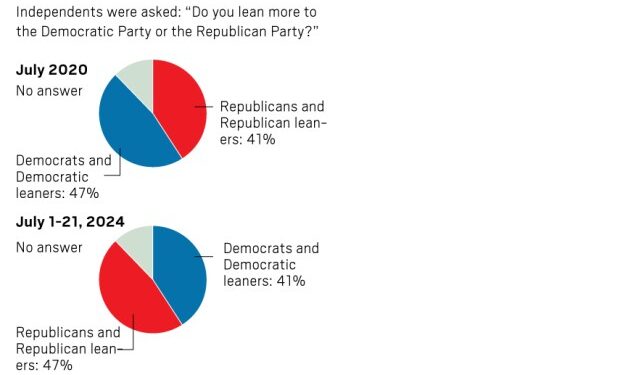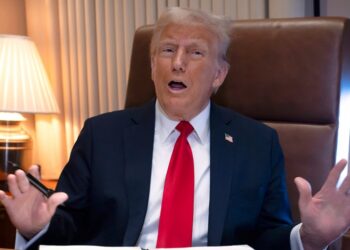With the Democratic National Convention starting in Chicago this week, we take a look at the history of political organizations in the U.S.
Convention history
There were no political conventions in the U.S. until 1831, when the Anti-Mason Party held the first one. Before that, nominations were done by private caucus in the parties, but Americans protested that system and felt it underrepresented the people. In the 1800s, conventions were held almost a year before elections for transportation purposes.
The first primary elections began in the early 1900s in a few states.
Today, presidential primaries have made the conventions unnecessary for practical purposes because the delegates are decided by voting results. The modern convention is a showcase for candidates, with prime-time news coverage and a political pep rally. The Democratic National Convention will take place in Chicago from Monday through Thursday.
The national nominating convention is typically the formal ceremony during which the party selects its nominee and adopts a platform. The delegates are people chosen to represent their state or territory at the convention. This year, the Democratic National Committee certified Vice President Kamala Harris as the party’s nominee during a virtual roll call vote Aug. 2.
In order to qualify for the virtual roll call, a candidate had to submit the signatures of at least 300 delegates by 6 p.m. July 30. Harris’ campaign submitted signatures from 3,923 delegates. President Joe Biden, the former presumptive Democratic nominee, withdrew from the presidential race July 21.
Party leanings
A poll by Gallup that asked which party people are affiliated with shows that those who consider themselves independent constitute the highest percentage.
There have been more than 100 political parties that are no longer functioning, and more than 30 among the 50 states today.
Political party evolution
There are no political parties during George Washington’s terms. Washington warns of the dangers of parties in his farewell address.
The first is the Federalist Party, which favors a strong national government. Its opponents become the Democratic-Republican Party, founded by Thomas Jefferson and James Madison.
The first Democrats
In 1828, Andrew Jackson starts the Democratic Party and is its first elected president. The party is pro-slavery, wants small government and opposes trade protection, national banks and paper money.
National split
The party divides over slavery, and many anti-slavery Democrats shift to the Republican Party, which begins in the Northern states in 1854. Abraham Lincoln is the first Republican president, and his party dominates the White House through the Civil War and most of the 50 years after.
Populist principles
In the 1890s, the Democrats fuse with the Populist Party, which is aligned with the labor movement.
‘Bully’
After being president for nearly two terms, Theodore Roosevelt breaks from the Republican Party and starts the Progressive Party, nicknamed the Bull Moose Party. It seeks to reverse the domination of big business by Republicans and Democrats, and advocates an eight-hour workday and giving women the right to vote. Roosevelt’s split of the vote gives control of the White House to the Democrats.
The New Deal
During the Great Depression, the Democratic Party backs large government programs such as Social Security and support for the unemployed, as well as labor unions. Those opposed begin calling themselves “conservatives.”
American Independent
In 2016 many people mistakenly register for the American Independent Party, which was founded in 1967 and is based on Alabama Gov. George Wallace’s segregationist policies.
Independent’s way
Ross Perot pulls in 19% of the vote, the most by a third-party candidate since the 27% by Theodore Roosevelt’s Bull Moose Party in 1912.
Green means stop
Ralph Nader’s presidential bid for the Green Party wins 2.7% of the vote, and Democrats accuse him of spoiling the election for their candidate, Al Gore.
Trump victory
The 2016 election was the fifth in which the winning candidate lost the popular vote, in this case by 2.8 million.
The 2020 election drew 158.4 million voters, the most ever.
Sources: Gallup, Pew Research Center, Richard J. Hardy of Western Illinois University, U.S. Constitution, Democratic National Committee, Republican National Committee, The Associated Press
Originally Published:









